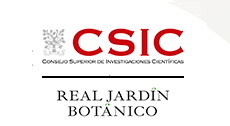Scientific Area
Abstract Detail
Nº613/1099 - Cuscuta (dodders; Convolvulaceae) as a model-system to study biology of heterotrophic plants
Format: ORAL
Authors
Saa Stefanovic 1, Miguel A. Garca 2, Mihai Costea 3
Affiliations
1 University of Toronto Mississauga, Mississauga, Canada
2 Royal Botanical Gardens, Madrid, Spain
3 Wilfrid Laurier University, Waterloo, Canada
Abstract
Among several dozen independently evolved groups of heterotrophs, Cuscuta is emerging as a model clade for understanding different aspects of heterotrophic plant biology due to the convergence of several factors. First, Cuscuta is one of the largest and most economically important lineages of heterotrophic plants. Second, phylogenetic relationships within this species-rich group are well-resolved and strongly supported. Third, the shallow phylogenetic level that encapsulates substantial diversity observed in this genus makes the system tractable. We are now interested to use this system to explore in-depth three particular venues of heterotrophic plant biology:
Cuscuta is one of only two clades of haustorial parasites known to span the trophic continuum from photosynthetic hemiparasites to non-photosynthetic, obligate holoparasites. Most of its lineages are cryptically photosynthetic and capable of limited and localized photosynthesis. However, we were unable to recover any plastome sequences from section Subulatae, suggesting that plastomes of its species are likely entirely lost, a condition encountered only once before in the angiosperm evolution (Rafflesiaceae).
Furthermore, Cuscuta may represent a genus with the broadest karyotypic and genome size diversity among all of angiosperms. This group includes species not only with regular monocentric but also with holocentric chromosomes, a feature found in a very few phylogenetically scattered groups of plants. In addition, the genus has diverse karyotypes, with enormous variation reported for chromosome numbers, chromosome size, and variation in nuclear DNA content as well as presence of symmetrical and asymmetrical karyotypes.
Discordances between phylogenies derived from different data sources suggest that reticulation and polyploidy have likely played a significant role in Cuscuta species diversification, with potentially 10% of its species being of hybrid origin. Some of these cases are consistent with more ancient hybridization events while represent relatively recent reticulations.
Our current progress in these three areas of Cuscuta biology will be discussed.




